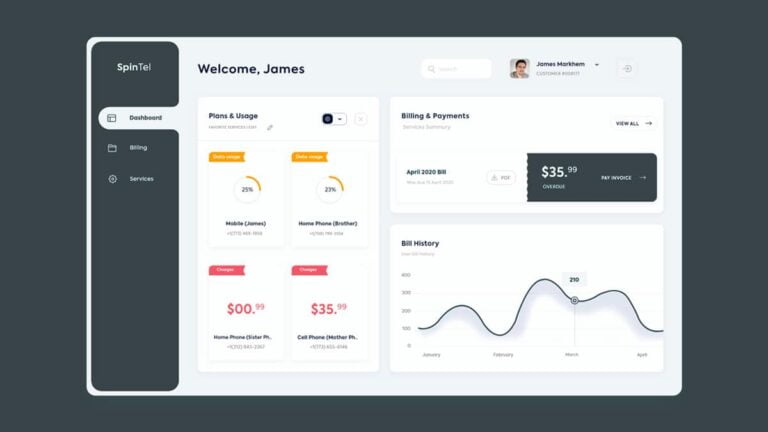The Covid pandemic has normalized offshore hiring for many industries, and it has become a trend because it saves cost and time. Despite the popularity and advantages of offshoring, many companies are still hesitant about hiring tech teams in different countries. Managing offshore teams is probably a lot easier than you think – but you need a strategy. In this article, we’ll show you how to manage offshore development team members in the most effective way.
Managing Offshore Teams: A Guide for Newbies
Managing offshore teams effectively isn’t that different from managing a local team, but it requires a lot more coordination, communication, and planning. Fortunately, the pandemic has helped all of us learn how to work together remotely, and managing offshore development teams is no different.
1. Start With a Robust Hiring Process
The key to successful offshore development management starts with the hiring and interviewing process. You need to keep your eyes peeled for any problems that might cause issues down the line. For example, how proficient are your potential developers in English? Some developers are great written communicators and have a better understanding of written English than spoken English. It’s not a problem, but you should embrace communication tools that facilitate written communication instead of the spoken word.
The way teams communicate doesn’t really matter, but it should be effective. If you pick up communication issues during the hiring process, it should be a red flag. This doesn’t just include language gaps but other communication gaps. Does the team take really long to respond to emails? Do they misunderstand briefs?
2. Work Out Fair Schedules
Many tech companies subject their staff to grueling schedules as they try to balance two or three different time zones. It’s simply not tenable (or fair!), and in today’s competitive tech industry, you should work extra hard to protect your team’s work-life balance.
Make sure to hire an offshore team that shares at least a few waking hours with your local team so that they can collaborate most effectively. If one team runs into issues while the other is fast asleep and unable to respond, you could run into dependency problems that can delay projects and cause bottlenecks.
3. Get the Right Tech Tools
Make sure that you enable your teams to collaborate effectively. Work management software can be a real helper for your teams and can even incorporate your business teams (e.g., marketing, sales, HR) for full transparency and visibility into every corner of the company.
You should also enable teams to use the software they have optimally, e.g., you can sync Google calendars to reflect different time zones so that they remain in sync at all times. It doesn’t really matter what type of work or project management tools you use, as long as everyone can access and use it easily. This will also give you an early warning if the project is going off track at any time.
4. Learn When to Manage (And When to Let Go)
While you need to know how to manage an offshore development team effectively, you should also know when to take a few steps back. No one likes to be micromanaged. During the pandemic, many managers felt out of control and tried to subject their employees to rigorous team sheets (or even invasive monitoring controls on their computers) to determine if they were being productive—the ones who didn’t find that employees were even more productive than ever before. Sometimes you need to let go and let teams run themselves.
It’s important to set clear boundaries and guidelines upfront. You need to let your teams know what to deliver and by when, but you can leave the rest up to them. You should also foster a culture of open communication so that teams can let you know early on if they are unable to meet those deadlines or deliverables in time. Openness, clarity, and transparency are the keys to successful offshore management.
5. Do Regular Video Meetings With the Team
Video conferencing with your team is a great way to manage a team effectively. It helps you to maintain a good relationship with your team that overall increases the total work productivity.
With regular video meetings, you can track the overall progress of a project in a better way; you can resolve the issues of an employee and covey your vision about the project more conveniently than over an email.
You can use tools like Zoom, Google Meet, or Skype to do video meetings with your offshore team.
6. Share Your Vision With the Team
One of the biggest mistakes people make after hiring an offshore development team is that they just assign tasks for them to complete. However, this is highly discouraged. If you have hired an offshore team, you need to first do a meeting with them and make them understand your goals and the bigger picture.
After the team has clearly understood the goal and shares the same vision, you can start giving them tasks. Now they see the bigger picture and know what they are working for overall, increasing the chances of success of the product.
7. Make a Set of Rules
Before starting out with an offshore team, you should make an agreement so that both parties are protected. The agreement should contain things like working hours, meeting hours, work contracts, payment details, etc. Not having an agreement with an offshore team is a very big mistake leading to a complete mess of the project sometimes.
You should also set feasible deadlines for each task that is given to the offshore team to save both your time and energy.
Conclusion
Managing offshore teams is not as complex as you might think. The world has become globalized, and tech teams are used to working remotely or in a hybrid environment. Make sure that you hire the right team and then keep the lines of communication open. You’ll save money, time, and energy by understanding the challenges and coming up with a game plan from the start.








